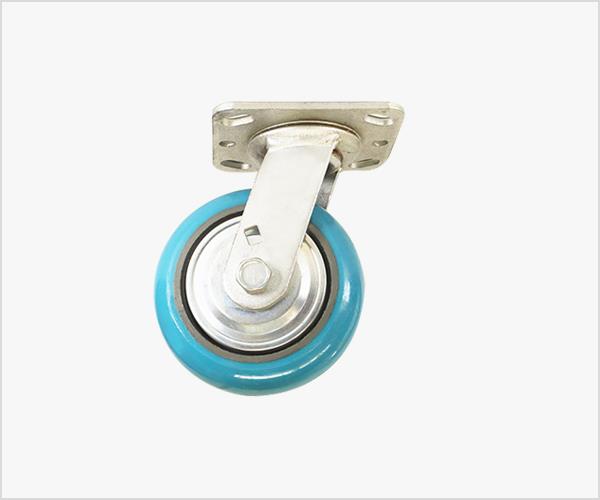Industrial castersThe thermal deformation refers to the plastic deformation of metal materials above the crystallization temperature. In the process of metal thermal deformation, due to the high temperature and strong atomic activity, the recrystallization caused by the hardening deformation is immediately eliminated, and the thermal deformation makes the internal shrinkage of the metal material and the pores and voids compact. The coarser (dendritic) grain structure is recrystallized and refined to make the internal structure of the metal dense and fine, and its mechanical properties (especially toughness) are significantly improved. The metal always maintains good plasticity during the thermal deformation process, which makes the workpiece undergo a large amount of plastic deformation. Due to the low yield strength of metal at high temperature, the deformation resistance is low and it is easy to deform.
Cold deformation of industrial casters means that the plastic deformation temperature of the metal is lower than the recrystallization temperature. Cold deformation is characterized by work hardening after metal deformation, that is, metal strength and hardness increase, and plastic toughness decreases. Cold deformed products have high dimensional accuracy and good surface quality. For metal components that cannot or cannot be improved by heat treatment, especially thin-walled and elongated components, it is an effective and economical method to improve strength and hardness.
For example, cold deformation processing of various cold stamping parts, cold extruded profiles, cold coil springs, cold drawing, cold heading bolts, etc. can be widely used in various industries. Cold-deformed products, including some complex parts or parts with higher requirements, also need to be tempered at low temperature to eliminate internal stress, but retain work hardening. Due to the work hardening phenomenon that occurs in the cold deformation process, the plastic deformation of the metal material is more serious, which brings difficulties to further plastic deformation, so the cold deformation requires heavy and high-power equipment. The surface of the processed blank should be clean, oxide-free and smooth. In addition, work hardening improves and reduces the corrosion resistance of deformed metals.

Related Industry Knowledge
- What are the requirements of heavy casters for its accessories?
- The importance of silent casters in the medical industry and the application of other industries
- What convenience does polyurethane casters bring to us in our home life?
- Use of outer packaging for industrial universal wheels
- Introduction of galvanized surface treatment of brake casters
- How to solve the rusty wheel of the cart?
- What aspects should be paid attention to when buying leveling casters?
- Welding technology in the production technology of shock-absorbing casters
- How to choose the bearing of stainless steel caster correctly?

